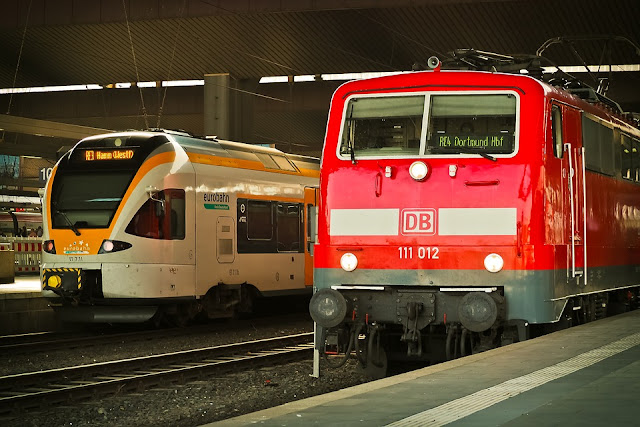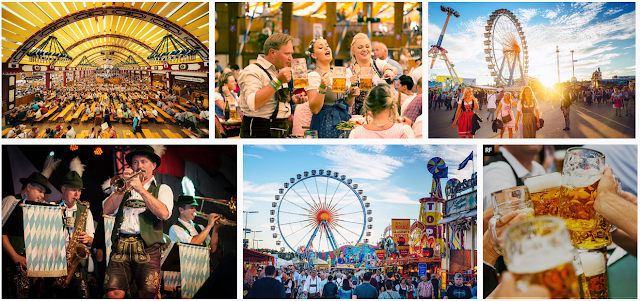Germany’s Efficient And Well-Integrated Public Transport
Public transport is the lifeline of all countries. Despite the lifestyle and per capita income, an efficient public transportation system is required to cater to large populations – the rules are the same for both developing and developed countries. Public transportation in Germany, for instance, is well-integrated, extensive, and most importantly, punctual. U-Bahn, S-Bahn, StraBenbahn, and bus networks cover the major cities across the nation with bicycles available on hire for short distances.
Here is An Overview of the German Public Transportation System
U-Bahn and S-Bahn
The German rail network is an extensive one, with over 43,000 kilometres of track of which close to 20,000 kilometres is electrified. Deutsche Bahn, being publicly-owned entity, is the country’s biggest rail operator. InterCity Express (ICE) covers all major cities in Germany along with a few neighbouring countries. S-Bahn, the suburban rail systems cover almost all the metros – with more number of stations as well as frequency. The U-Bahn, meanwhile, is Germany’s rapid transit underground train system.
Buses
Buses are relatively new in Germany but the sector is already experiencing a great boom. With the passing of a legislation protecting the national railway in 1980s, intercity bus service in the nation fell out of public’s favour. However, with the deregulation of the sector in 2013, it experienced a boom. Flixbus is currently the largest bus service provider in Germany. Along with a green bus fleet, it also boasts of e-ticketing system and has already expanded to Europe.
Also Read : Transportation – The Key Contributor To Economic Development
Bicycles
Traffic congestion is almost a universal problem with even developed countries lacking a permanent solution despite their infrastructure. One of the possible solutions to the problem is a bicycle and Germany is a leading example. Only 16 percent of the German population owns a car – despite the nation being a global automobile hub. Given the prevalence of cycling in Germany, it isn’t surprising that many of the nation’s cities have dedicated cycle lanes.
Over 70,000 kilometres are covered by 200 cycling routes all across the country. Freiburg city in Baden-Wurttemberg consists of numerous car-free streets, dedicated to just cyclists and pedestrians. Apart from Freiburg, bicycles are also a popular mode of transport in Berlin – be it for pleasure, commuting, or sports.
Trams
The tram system is also known as StraBenbahn in the nation. In 1960s and 1970s, many cities did away with the system and with time, the remaining ones were upgraded to Stadtbahn (light rail). Trams are now coming up in many cities across Germany while Berlin is home to one of the world’s longest tram networks.
It won’t be an overstatement to say that public transportation in Germany is close to perfect, if not completely so. Not only are the public transportation systems well-integrated and efficient but also cover extensive areas and cause minimum damage to the environment. The widespread train network for far away regions along with availability of bicycles for shorter ones eliminates the need for personal transport to a great extent. This careful mix of services catering to public needs in a time-bound manner makes the German transport system one of the most ideal transportation models available in the world.
Here is An Overview of the German Public Transportation System
U-Bahn and S-Bahn
The German rail network is an extensive one, with over 43,000 kilometres of track of which close to 20,000 kilometres is electrified. Deutsche Bahn, being publicly-owned entity, is the country’s biggest rail operator. InterCity Express (ICE) covers all major cities in Germany along with a few neighbouring countries. S-Bahn, the suburban rail systems cover almost all the metros – with more number of stations as well as frequency. The U-Bahn, meanwhile, is Germany’s rapid transit underground train system.
Buses
Buses are relatively new in Germany but the sector is already experiencing a great boom. With the passing of a legislation protecting the national railway in 1980s, intercity bus service in the nation fell out of public’s favour. However, with the deregulation of the sector in 2013, it experienced a boom. Flixbus is currently the largest bus service provider in Germany. Along with a green bus fleet, it also boasts of e-ticketing system and has already expanded to Europe.
Also Read : Transportation – The Key Contributor To Economic Development
Bicycles
Traffic congestion is almost a universal problem with even developed countries lacking a permanent solution despite their infrastructure. One of the possible solutions to the problem is a bicycle and Germany is a leading example. Only 16 percent of the German population owns a car – despite the nation being a global automobile hub. Given the prevalence of cycling in Germany, it isn’t surprising that many of the nation’s cities have dedicated cycle lanes.
Over 70,000 kilometres are covered by 200 cycling routes all across the country. Freiburg city in Baden-Wurttemberg consists of numerous car-free streets, dedicated to just cyclists and pedestrians. Apart from Freiburg, bicycles are also a popular mode of transport in Berlin – be it for pleasure, commuting, or sports.
Trams
The tram system is also known as StraBenbahn in the nation. In 1960s and 1970s, many cities did away with the system and with time, the remaining ones were upgraded to Stadtbahn (light rail). Trams are now coming up in many cities across Germany while Berlin is home to one of the world’s longest tram networks.
It won’t be an overstatement to say that public transportation in Germany is close to perfect, if not completely so. Not only are the public transportation systems well-integrated and efficient but also cover extensive areas and cause minimum damage to the environment. The widespread train network for far away regions along with availability of bicycles for shorter ones eliminates the need for personal transport to a great extent. This careful mix of services catering to public needs in a time-bound manner makes the German transport system one of the most ideal transportation models available in the world.







Comments
Post a Comment